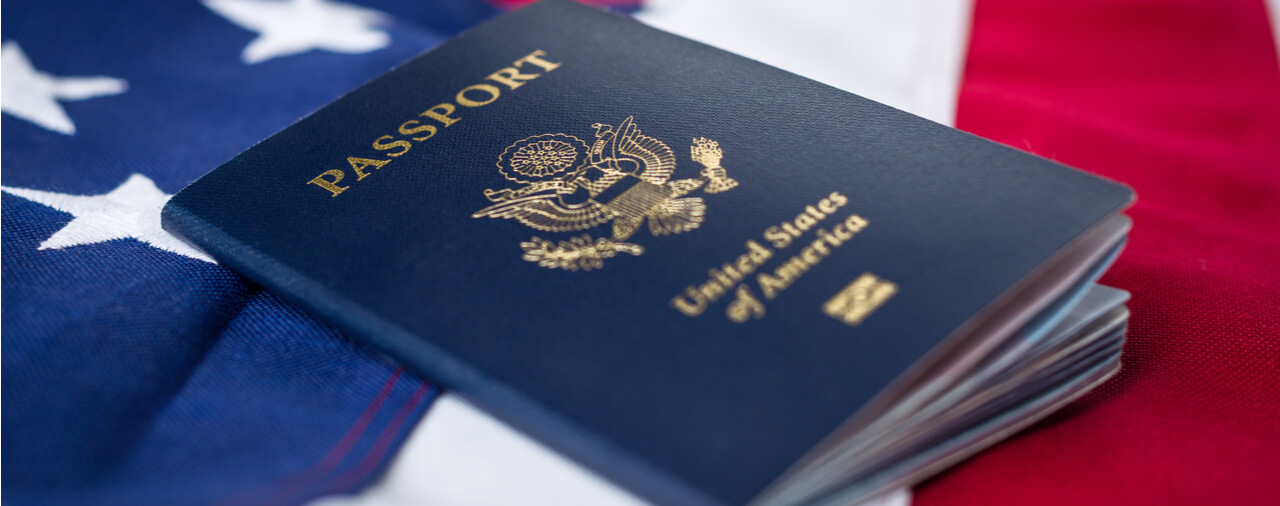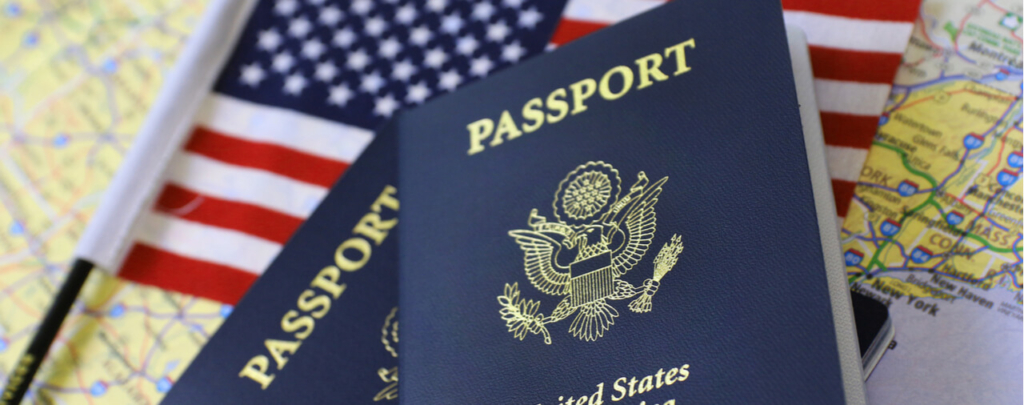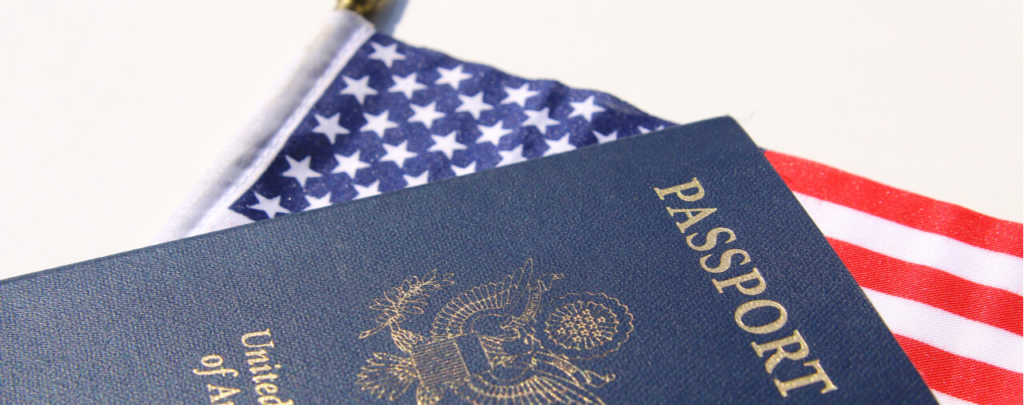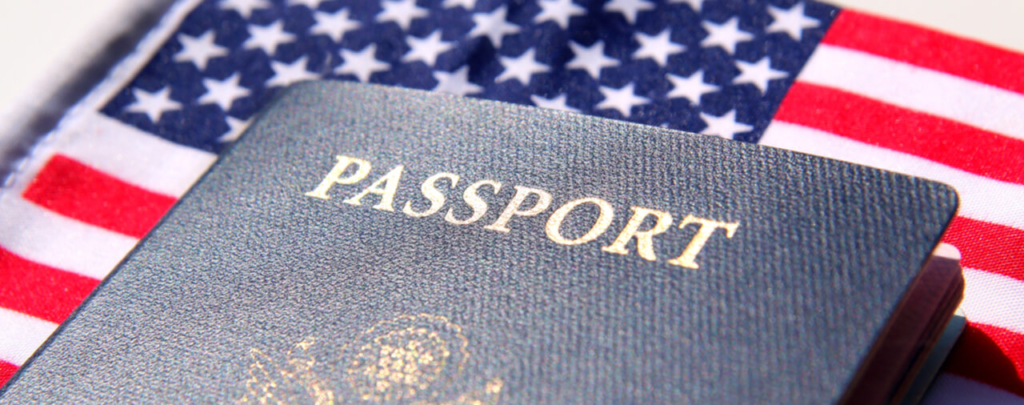- Introduction: Understanding U.S. Citizenship, U.S. Nationality, and Nationality without Citizenship
- Understanding the Terms “National” and “Citizen”
- Noncitizen Nationals under INA 308
- Constitutionality of Nationality Without Citizenship
- Conclusion
Introduction: Understanding U.S. Citizenship, U.S. Nationality, and Nationality without Citizenship
Under the Immigration and Nationality Act (INA), it is impossible to be a U.S. citizen without being a U.S. national. Furthermore, it is impossible for a noncitizen to apply for U.S. nationality but not U.S. citizenship. However, persons born in American Samoa, certain persons in the Northern Mariana Islands who opted to remain U.S. nationals rather than to become U.S. citizens, and those born to one or two noncitizen national parents, there are U.S. nationals who lack U.S. citizenship. In this article, we will explain the meaning of the terms “national” and “citizen” and examine when a person can be a noncitizen national.
To learn about other issues pertaining to noncitizen nationals, please see the following articles:
Rules for acquiring nationality without citizenship at birth [see article];
General immigration considerations for noncitizen nationals [see article];
Citizenship claims and other adjudicative issues under the CNMI covenant [see article]; and
Filing a family-based immigrant visa petition as a noncitizen national [see article].
Understanding the Terms “National” and “Citizen”
Under section 101(a)(21) of the INA, the term “national” means a person owing permanent allegiance to a state.
Under section 101(a)(22), the term “national of the United States” means:
A. A citizen of the United States; or
B. A person who, though not a citizen of the United States, owes permanent allegiance to the United States.
Therefore, under sections 101(a)(21) and (22)(A), all U.S. citizens are U.S. nationals. It is impossible to have U.S. citizenship but lack U.S. nationality.
However, section 101(a)(22)(B) renders it possible to have U.S. nationality but lack U.S. citizenship. In the next section, we will examine the situations in which a person can be a U.S. national but lack U.S. citizenship.
Noncitizen Nationals under INA 308
Section 308 of the INA addresses the scenarios in which a person acquires U.S. nationality, but not U.S. citizenship, at birth.
The following are the scenarios found in section 308 in which a person acquires nationality, but not citizenship, at birth (paraphrased):
- A person born in an outlying possession of the United States on or after the date of the formal acquisition of such possession;
- A person born outside of the United States or its outlying possessions to two noncitizen national parents where at least one of whom has had a residence in the United States or its outlying possessions prior to the birth of such person;
- A person of unknown parentage found in an outlying possession of the United States while under the age of five years until shown, prior to attaining the age of twenty-one years, not to have been born in such outlying possession; or
- A person born outside of the United States and its outlying possessions to one noncitizen national parent and one alien parent, provided that, prior to the birth of the person, the noncitizen national parent was physically present in the United States or its outlying possessions for a period or periods not totaling less than seven years in any continuous period of ten years-
- A. during which the noncitizen national parent was not outside of the United States or its outlying possessions for a continuous period of more than one year, and
- B. at least five years of which were after attaining the age of fourteen years.
The rules for acquiring U.S. nationality at birth under section 308 are very similar to the rules for acquiring U.S. citizenship and nationality at birth found in section 301 [see article]. The primary difference is that nationals at birth are either born in an “outlying possession” or are born to noncitizen national parents or to a noncitizen national and alien parent.
The term “outlying possession” is defined in section 101(a)(29) as meaning American Samoa and Swains Island. Accordingly, under the INA, an alien can only obtain noncitizen nationality at birth by being born in American Samoa or Swains Island or by being born to noncitizen national parents (under the conditions listed in section 308).
To learn more about demonstrating noncitizen nationality at birth, please see our full article [see article].
Noncitizen Nationals from the Commonwealth of the Northern Mariana Islands (CNMI)
The Department of State’s Foreign Affairs Manual (FAM) explains policy and procedures regarding the Commonwealth of the Northern Mariana Islands (CNMI) in 7 FAM 1126.1. From 1947 to 1986, the Northern Mariana Islands was part of the Trust Territory of the Pacific Islands (TTPI).1 On November 4, 1986, “the Northern Mariana Islands became the self-governing [CNMI], in political union with and under the sovereignty of the United States.” In an interesting note related to acquisition of citizenship under section 301 and acquisition of nationality under section 308, the FAM notes that DOS only allows for periods of residence or physical presence in the Northern Mariana Islands after November 4, 1986, for purpose of meeting the physical presence requirements under those sections.
7 FAM 1126.2 reproduces the CNMI Covenant which explains how citizenship and nationality were affected by the establishment of the CNMI.
Under Article III, CNMI Covenant, Section 301, the following persons became U.S. citizens and nationals who on November 4, 1986 were “not citizens or nationals of the United States under any other provision of law, and who on that date did not owe allegiance to any foreign state” (paraphrased):
a. All persons born in the Northern Mariana Islands who were citizens of the TTPI on the day preceding November 4, 1986, and who were on that date domiciled in the Northern Mariana Islands or in the United States or any territory or possession thereof;
b. All persons who were citizens of the TTPI on the day preceding November 4, 1986, and who were domiciled continuously in the Northern Mariana Islands for at least five years immediately prior to that date, and who, unless under age, registered to vote for the Northern Mariana Islands District Legislature or for any municipal election in the Northern Mariana Islands prior to January 1, 1975; and
c. All persons domiciled in the Northern Mariana Islands on the day preceding November 4, 1986, who, although not citizens of the TTPI, on that date had been domiciled continuously in the Northern Mariana Islands beginning prior to January 1, 1974.
However, section 302 (of the same article of the CNMI Covenant) allowed for any person who would have otherwise obtained citizenship under one of the three above provisions to, within six months of November 4, 1986, or within six months after reaching 18 years of age (whichever was later) become a noncitizen national by making a declaration under oath before a U.S. court.
Accordingly, any persons in CNMI who opted to become nationals under section 302 are noncitizen nationals (unless they subsequently acquired U.S. citizenship). Under current law, they are the only other persons who can be noncitizen nationals of the United States besides those who become noncitizen nationals under the provisions of section 308 of the INA. Any persons born in CNMI after November 4, 1986, are U.S. citizens from birth and may not opt to become noncitizen nationals.
To learn about citizenship claims and adjudicative issues under the CNMI Covenant, please see our full article [see article].
No Other Noncitizen Nationals
Outside of section 308 of the INA, there are no other provisions in the INA for conferring nationality without citizenship. One may note that the text from section 101(a)(21) and (a)(22)(B) does not appear to necessarily preclude the possibility that there are other ways to obtain nationality but not citizenship. However, in the Matter of Tuitasi, 15 I&N Dec. 102 (BIA 1974) [PDF version], the Board of Immigration Appeals (BIA) held that a person may only acquire noncitizen nationality through section 308 of the INA.2 In so doing, the Board stated that it could not “accept the … assumption that Congress would permit an alien to acquire United States nationality merely by asserting an allegiance to the United States.” Numerous published circuit court decisions have rejected alternative ways of acquiring U.S. nationality without citizenship. Current circuit precedent is in line with the BIA’s decision in the Matter of Tuitasi.
In U.S. v. Morin, 80 F.3d 124 (4th Cir. 1996) [PDF version], the Fourth Circuit held that “an application for citizenship is the most compelling evidence of permanent allegiance to the United States short of citizenship itself,” thus taking the position that a permanent resident who filed an application for citizenship could qualify as a noncitizen national. However, in deference to the Board of Immigration Appeals’ (BIA’s) position that noncitizen nationality can only be obtained through section 308, the Fourth Circuit abandoned the holding of Morin in Fernandez v. Keisler, 502 F.3d 337 (4th Cir. 2003) [PDF version]. The holding of Morin was also disagreed with in Marquez-Almanzar v. INS, 418 F.3d 210 (2d. Cir. 2005) [PDF version]; Salim v. Ashcroft, 350 F.3d 307 (3d. Cir. 2003) [PDF version]; Patel v. Napolitano, 706 F.3d 370 (4th Cir. 2013) [PDF version]; and U.S. v. Jimenez-Alcala, 353 F.3d 858 (10th Cir. 2003) [PDF version]. Jimenez-Alcala cited to Justice Ruth Bader Ginsburg’s dissent3 in Miller v. Albright, 523 U.S. 420, 467 n.2, 118 S.Ct 1428 (1998) [PDF version], wherein she stated:
Nationality and citizenship are not entirely synonymous; one can be a national of the United States and not yet a citizen. [INA 101(a)(22)]. The distinction has little practical impact today, however, for the only remaining noncitizen nationals are residents of American Samoa and Swains Island.
In Perdomo-Padilla v. Ashcroft, 333 F.3d 964 (9th Cir. 2004) [PDF version], the Ninth Circuit held that the only ways to become a U.S. national are through birth (encompassing citizenship and nationality through birth and noncitizen nationality through birth) or by completing the entire naturalization process, meaning that an alien cannot partially complete the naturalization process and claim U.S. nationality. The Fifth Circuit found Perdomo-Padilla persuasive in Omolo v. Gonzales, 452 F.3d 404 (5th Cir. 2006) [PDF version]. In Abioudun v. Gonzales, 461 F.3d 1210 (10th Cir. 2006) [PDF version], the Tenth Circuit held that signing an oath of allegiances at a naturalization interview does not render one a U.S. national without completing the naturalization process.
In Marquez-Almanzar v. INS, 418 F.3d 210 (2d Cir. 2005) [PDF version], the Second Circuit held that an alien cannot establish U.S. nationality through military service, swearing allegiance to the U.S. constitution, registering for the Selective Service, and by “completely immersing [oneself] in American society.” In Dragrenice v. Gonzalez, 470 F.3d 183 (4th Cir. 2006) [PDF version], the Fourth Circuit held that taking an oath upon enlisting in the United States Army Reserve does not render an alien a U.S. national.
Additionally, there are numerous other circuit court cases that reject proposed paths to obtaining noncitizen nationality that are not among those in section 308 of the INA. Between the various circuit decisions and the Matter of Tuitasi, there is no way to obtain nationality without U.S. citizenship other than the ways listed in section 308. However, as we will examine in the next subsection, there previously was one other means by which persons could become noncitizen nationals.
Possible Ambiguous Situations
The United States is in possession of several unincorporated territories that are not mentioned in the INA. According to 7 FAM 1121.4-3, these include Midway, Wake, Johnston, and other Pacific islands. Because the INA only defines American Samoa and Swains Island as “outlying possessions,” there is no law pertaining to the status of any persons born in unincorporated territories not mentioned in the INA. However, the islands not mentioned are generally uninhabited or only home to U.S. military personnel and/or researchers.
Constitutionality of Nationality Without Citizenship
The United States District Court for the District of Columbia held in Tuaua v. U.S., 951 F.Supp.2d 88 (D.D.C. Jun. 24, 2013) [PDF version], that the Fourteenth Amendment’s Citizenship Clause does not guarantee birthright citizenship to American Samoans. The decision was affirmed by the D.C. Circuit in Tuaua v. U.S., 788 F.3d 300 (D.C. Cir. 2015) [PDF version].
The question for both courts was whether the “within the United States, or any place subject to their jurisdiction” language of the Citizenship Clause extents to American Samoa.
The District Court opinion noted that while American Samoa is “subject to the jurisdiction of the United States,” it is less clear whether it is “in the United States” for purpose of the Citizenship Clause. It referenced Supreme Court’s “Insular Cases”4 in which the Supreme Court held broadly that certain fundamental constitutional rights are extended to the inhabitants of unincorporated territories. The D.C. Circuit noted that in Downes v.Bidwell, the Supreme Court’s plurality opinion took the position that citizenship and suffrage are not “natural rights” that are extended to the inhabitants of unincorporated territories. It cited to Barber v. Gonzales, 347 U.S. 637, 639 n.1, 74 S.Ct 822, 98 L.Ed 1009 (1954) [PDF version] in which the Supreme Court held that those born in the Philippines during the territorial period were noncitizen nationals. It noted that the Second, Third, Fifth, and Ninth Circuits all held that the term “United States” in the Citizenship Clause does not encompass unincorporated territories.5 The District Court also noted Eche v. Holder, 694 F.3d 1026, 1027-28 (9th Cir. 2012) [PDF version], in which the Ninth Circuit held that the Northern Mariana Islands is not included in the Citizenship Clause (rather, citizenship in the Northern Mariana Islands is a matter of statute). Finally, the District Court noted that territorial citizenship has long been treated as a statutory matter, and that “Congress has not seen fit to bestow birthright citizenship upon American Samoa, and in accordance with the law, this Court must and will respect that choice.”
Citing to the Supreme Court decisions in Sailor’s Snug Harbor, 28 U.S. 99 at 155 (1830) [PDF version] and Elk v. Wilkins, 112 U.S. 94, 102, 5 S.Ct., 41 28 L.Ed 643 (1884) [PDF version], the D.C. Circuit opinion held that “we are skeptical that the framers plainly intended to extend birthright citizenship to distinct, significantly self-governing political territories within the United States sphere of sovereignty…” The D.C. Circuit relied upon the framework set forth in the Insular Cases because “the [Supreme] Court has continued to invoke the Insular framework when dealing with questions of territorial and extraterritorial application.” The D.C. Circuit, relying on Supreme Court precedent, found that the “fundamental” rights ensured to inhabitants of unincorporated territories are “those rights so basic as to be integral to a free and fair society.” The D.C. Circuit held that the right to jus soli citizenship is not such a right under the Insular framework. Finally, the D.C. Circuit noted that the people of American Samoa “have not formed a collective consensus in favor of United States citizenship.” Accordingly, the D.C. Circuit held that “[t]he imposition of citizenship on the American Samoan territory is impractical and anomalous on a more fundamental level [than the Constitutional concerns].”
Please read our materials about the Citizenship Clause to learn more about some of these issues [see article and blog].
Conclusion
Unless a person was born in American Samoa, opted for nationality but not citizenship under the CNMI covenant, or obtains U.S. nationality through one or two noncitizen national parents, the terms “citizen” and “national” are nearly interchangeable for most practical intents and purposes. Courts have clearly established that there is no alternative means of obtaining U.S. nationality separate of obtaining U.S. citizenship. However, U.S. employers should be aware that noncitizen nationals are treated the same as U.S. citizens for employment verification purposes.
To learn about more issues regarding noncitizen nationals, please refer to the list of related articles under the introduction.
- Along with what is now the Republic of the Marshall Islands, the Federated States of Micronesia, and the Republic of Palau.
- Note that section 308 has been revised and slightly expanded since Tuitasi.
- Although Justice Ginsburg wrote this in a dissenting opinion, the footnote merely explained the distinction between nationality and citizenship and was not a position that was rejected by the majority.
- De Lima v. Bidwell, 182 U.S. 1, 21 S.Ct. 743, 45 L.Ed. 1041 (1901); Goetze v. United States, 182 U.S. 221, 21 S.Ct. 742, 45 L.Ed. 1065 (1901); Dooley v. United States, 182 U.S. 222, 21 S.Ct. 762, 45 L.Ed. 1074 (1901); Armstrong v. United States, 182 U.S. 243, 21 S.Ct. 827, 45 L.Ed. 1086 (1901); Downes v. Bidwell, 182 U.S. 244, 21 S.Ct. 770, 45 L.Ed. 1088 (1901); and Huus v. N.Y. and Porto Rico Steamship Co., 182 U.S. 392, 21 S.Ct. 827, 45 L.Ed. 1146 (1901)
- See Nolos v. Holder, 611 F.3d 279 (5th Cir. 2010); Valmonte v. INS, 136 F.3d 914 (2d Cir. 1998); Lacap v. INS, 138 F.3d 518 (3d Cir. 1998); Rabang v. INS, 35 F.3d 1449 (9th Cir. 1994)





